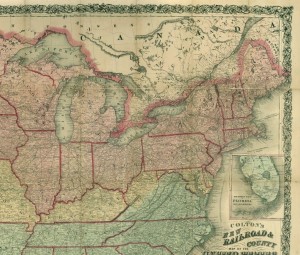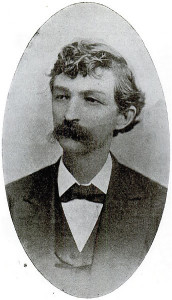Maybe John Hunt Morgan and his confederates didn’t escape through a sewer under the Ohio Penitentiary; it might have been an air chamber. Maybe the escapees didn’t head to Kentucky right after the break-out; they might have gone north first.
From the Richmond Daily Dispatch December 5, 1863:
Escape of Gen. Morgan from the Ohio Penitentiary — he telegraphs his arrival in Canada.
Major General John Morgan, with Captains J. C. Bennett, S. B. Taylor, Ralph Sheldon, T. I. Hines. L. Q. Hokersmith, and S. T. Magee, made his escape from the Ohio penitentiary at Columbus, on Fridaynight, and has reached Toronto, Canada, with his companions. With his usual good humor, he telegraphed from Toronto to Columbus that they needn’t put themselves to any further trouble on his account. A telegram from Cincinnati gives the following description of the manner of his escape:
Col. Dick Morgan (a brother of Gen. John Morgan) and six Captains were confined in the lower range of cells, and with knives dog through the floor of the cell, which was composed of cement and nine inches of brick. Underneath the cell was an air chamber, running the whole length of the building. This was known to them. When once in the chamber they dug through the earth to the outside wall. Gen. Morgan occupied the cell over Col. Morgan’s. On Fridaynight, as the prisoners were locked up for the night, Gen. Morgan was allowed to exchange cells with Dick, who, everything being prepared, permitted his brother to take his place.
Some time during the night the prisoners crawled through the hole they had dug under the wall, and which they had carefully concealed. Taking ropes with them, they escaped from prison immediately between the main building and the female department. When once in the yard, escape was comparatively easy. They went to the southwest corner of the outer wall, near the big gate, threw their rope over the top, where it secured itself on one of the spikes, and by the aid of timber near at hand they clambered to the top and easily descended outside. There are no guards on the outer walls after certain hours. The prisoners were dressed in citizens’ clothes, not prison uniform.
Captain Hines, who is a mason and bricklayer, had charge of the work which resulted in the escape of the prisoners. A note was left for the warden, of which the following is a copy:
Castle Marion, cell no. 20,
November 27, 1863.
Commencement–Nov. 4, 1863.Conclusion– Nov. 20, 1863. Number of hours for labor per day, three. Tools, two small knives. “La patience amer mais sou fruit est doux.” (Patience is bitter, but its fruit is sweet.)
By order of my six honorable confederates.
T. Henry Hines, Capt. C. S. A.
It is written that Thomas Henry Hines surmised the existence of the air chamber under the prison because the cell floors weren’t damp or moldy. “He had been reading the novel Les Misérables and was said to be inspired by Jean Valjean and Valjean’s escapes through the passages underneath Paris, France.” After Toronto Hines and Morgan headed home. Hines was captured in Tennessee but escaped the night of the day he was caught. Hines plotted mayhem for the Union during the rest of the war.


